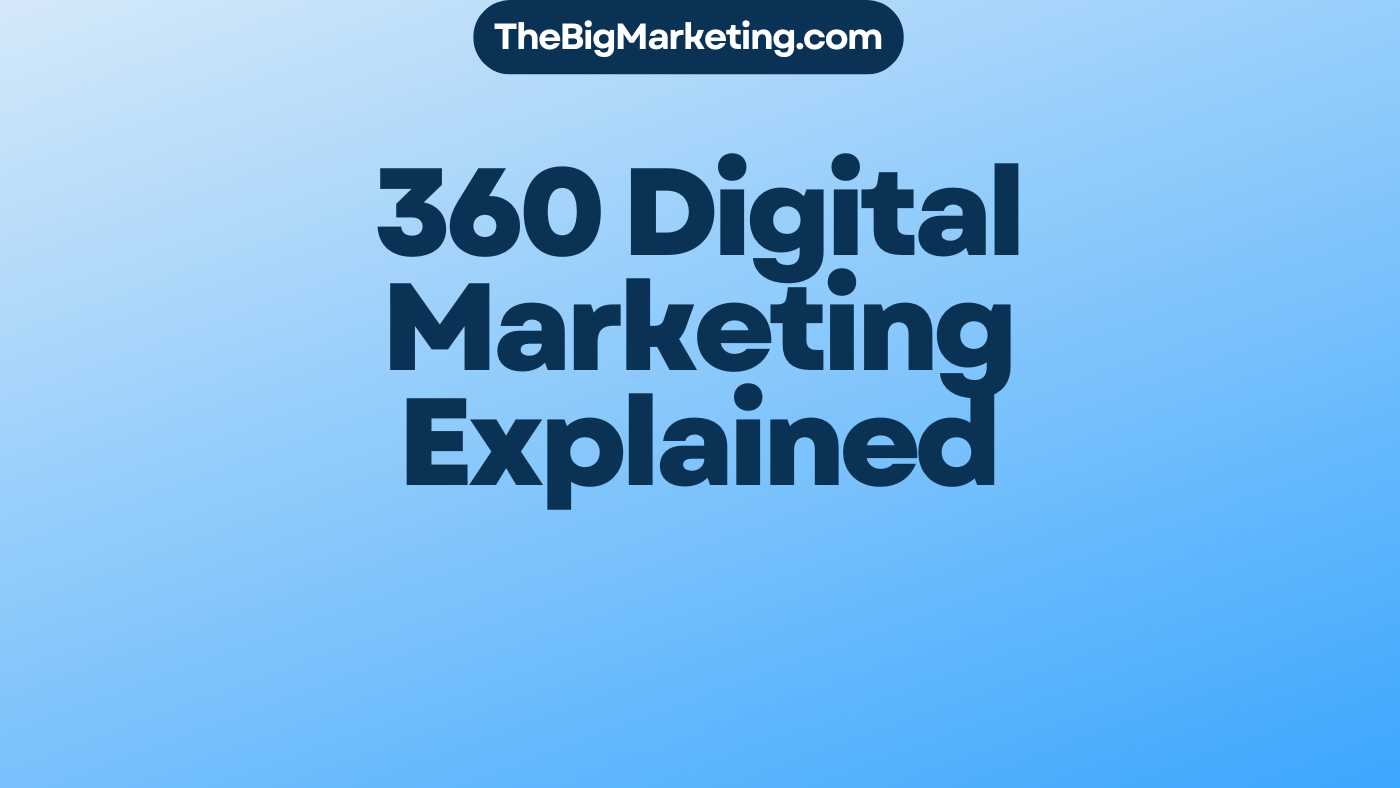The USPS Marketing Strategy for 2024 is a comprehensive plan that outlines the organization’s vision and goals for the future. The USPS understands the need to adapt to the evolving digital economy and provide valuable products and services to its customers. Through strategic initiatives and innovative approaches, the USPS aims to deliver world-class customer experiences, empower employees, drive innovation, invest in future platforms, and support legislative changes.
With a focus on enhancing customer experiences, the USPS is committed to providing prompt, reliable, and efficient services to all communities. By enabling businesses to grow and communities to thrive, the USPS aims to bind the nation together in a digitally connected world. This customer-centric approach is central to the USPS mission and vision for 2024.
Recognizing the importance of incorporating digital innovation in direct mail marketing, the USPS encourages businesses to leverage tools like Informed Delivery campaigns. By combining physical mail with complementary digital imagery, businesses can maximize the effectiveness of their direct mail efforts. This approach allows for greater personalization and increased recipient engagement.
Incorporating case studies from real-world examples, such as the Pittsburgh Pirates’ Informed Delivery A/B testing and Bono’s Pit Bar-B-Q’s representative image A/B test, the USPS provides insights into the impact of different strategies on driving action and recipient engagement. These case studies further highlight the USPS’s commitment to innovation and its ability to deliver results for businesses.
To incentivize mail owners and encourage growth, the USPS has introduced Mail Growth Incentives for 2024. By offering postage credits for incremental mail volume, the USPS aims to support and reward mail owners who increase their qualifying First-Class Mail and Marketing Mail volumes. The process and timeline for these incentives are designed to provide incentives throughout the year and fuel the growth of the postal service.
In conclusion, the USPS Marketing Strategy for 2024 is a forward-thinking plan that positions the organization for success in the digital economy. By focusing on customer experiences, empowering employees, driving innovation, investing in future platforms, and supporting legislative changes, the USPS aims to build a financially sustainable postal service that meets the evolving needs of customers. Through the integration of digital innovation and the introduction of growth incentives, the USPS is well-positioned to deliver value and drive growth in the years ahead.
Key Takeaways:
- The USPS Marketing Strategy for 2024 focuses on delivering world-class customer experiences, empowering employees, driving innovation, investing in future platforms, and supporting legislative changes.
- Incorporating digital innovation in direct mail marketing, such as Informed Delivery campaigns, can enhance the effectiveness of direct mail efforts.
- Real-world case studies highlight the impact of different strategies on recipient engagement and driving action.
- The USPS has introduced Mail Growth Incentives for 2024 to encourage mail owners to increase their qualifying mail volumes and offer postage credits for incremental growth.
- The USPS Marketing Strategy positions the organization for success in the digital economy, ensuring a financially sustainable postal service that meets the evolving needs of customers.
The USPS Mission and Vision for 2024
The United States Postal Service (USPS) has a clear mission and vision for the year 2024. The USPS’s mission is to bind the nation together by providing prompt, reliable, and efficient services to all communities. This mission reflects the USPS’s commitment to serve as a vital connector for people across the country, facilitating communication, commerce, and connection.
In line with its mission, the USPS envisions a financially sustainable postal service that enables all Americans to connect, businesses to grow, and communities to thrive in a digitally connected world. This vision for 2024 recognizes the evolving needs of customers in the digital economy and highlights the USPS’s determination to remain a reliable and accessible service provider.
To achieve its vision for 2024, the USPS is dedicated to delivering universal, affordable, and high-quality mail and parcel delivery to all Americans. This commitment ensures that individuals and businesses can rely on the USPS’s extensive network and expertise to facilitate their communication and commerce needs effectively.
Promoting Connectivity
Recognizing the crucial role the USPS plays in keeping people connected, the organization aims to improve and expand its services to reach every corner of the nation. By providing prompt and reliable services, the USPS connects individuals, families, and communities, regardless of their geographical location or economic status.
Supporting Business Growth
The USPS also understands the importance of supporting business growth and fostering economic development. By offering affordable and efficient mail and parcel delivery services, the USPS enables businesses, large and small, to reach customers across the country. This accessibility contributes to the growth and success of businesses, promoting economic prosperity for communities nationwide.
Empowering Communities
Moreover, the USPS recognizes that thriving communities are the backbone of a prosperous nation. By providing reliable postal services to communities, the USPS supports social connectivity, facilitates access to essential resources, and contributes to the overall well-being of individuals and families.
By aligning its mission and vision with the changing needs of customers, the USPS remains dedicated to delivering its services with efficiency, dependability, and a customer-centric approach. This commitment allows the USPS to continue its essential role in connecting the nation and empowering communities well into the future.
USPS Ready-Now and Future-Ready Goals for FY2020-FY2024
The United States Postal Service (USPS) has defined a set of ambitious goals for the period of FY2020-FY2024 to navigate the changing landscape of the digital economy. These goals, known as the USPS Ready-Now and Future-Ready Goals, encompass various aspects of the organization’s operations and strategies.
The first goal of the USPS is to deliver world-class customer experiences by prioritizing customer-centric initiatives and services. This involves enhancing the quality and efficiency of mail and package delivery, streamlining customer support processes, and leveraging technology to improve user experiences.
The second goal focuses on equipping and empowering employees. The USPS recognizes that its workforce plays a crucial role in delivering exceptional service. To achieve this goal, the organization aims to invest in professional development programs, provide training and resources, and foster a culture of empowerment and engagement among employees.
Innovation is at the heart of the USPS’s third goal. To deliver value in a rapidly evolving market, the organization seeks to innovate faster by embracing emerging technologies, exploring new delivery methods, and implementing data-driven strategies. This goal also involves leveraging technology to optimize operational efficiency and improve mail and package tracking capabilities.
The USPS’s fourth goal is to invest in future platforms that support its long-term sustainability. This includes upgrading infrastructure, modernizing facilities, and adopting advanced technologies to ensure reliable and efficient mail and package processing. By investing in future platforms, the USPS aims to stay ahead of the curve and meet the evolving needs of its customers.
The final goal focuses on supporting legislative and regulatory changes. The USPS recognizes the importance of advocating for policy changes that enable it to operate as a financially sustainable entity. By actively engaging with lawmakers and regulatory bodies, the organization aims to shape policies that facilitate its mission of providing affordable and reliable mail and package services.
Overall, the USPS Ready-Now and Future-Ready Goals reflect the organization’s commitment to staying relevant and competitive in the digital age. By delivering world-class customer experiences, empowering employees, driving innovation, investing in future platforms, and supporting legislative changes, the USPS aims to ensure its continued success in the years to come.
| USPS Goals | Description |
|---|---|
| Delivering World-Class Customer Experiences | Enhance customer services and improve user experiences |
| Equipping and Empowering Employees | Invest in employee development and foster engagement |
| Innovating Faster to Deliver Value | Embrace emerging technologies and implement data-driven strategies |
| Investing in Future Platforms | Upgrade infrastructure and adopt advanced technologies |
| Supporting Legislative and Regulatory Changes | Advocate for policies that support long-term sustainability |
Incorporating Digital Innovation in Direct Mail Marketing
The USPS recognizes the importance of digital innovation in direct mail marketing. In today’s increasingly digital landscape, businesses need to leverage technology to enhance the effectiveness of their direct mail efforts. By incorporating digital tactics, such as Informed Delivery campaigns, businesses can create a seamless customer experience that combines the power of traditional mail with the convenience of digital platforms.
One such digital innovation is the use of Informed Delivery campaigns. This service allows businesses to include complementary digital imagery in a daily digest email sent to subscribers. This creates a second touchpoint for businesses to engage with their audience and drive action. By showcasing relevant content and offers through Informed Delivery, businesses can capture the attention of recipients and increase the chances of conversion.
Split testing within Informed Delivery campaigns is another digital innovation that can significantly impact the effectiveness of direct mail marketing. By testing different messages and imagery, businesses can optimize their campaigns and ensure they resonate with their target audience. This allows for data-driven decision-making and the ability to continuously iterate and improve marketing strategies.
Benefits of Incorporating Digital Innovation in Direct Mail Marketing:
- Enhanced customer experience through digital touchpoints
- Increased engagement and conversion rates
- Opportunity for real-time data collection and analysis
- Improved targeting and personalization
- Ability to optimize campaigns through split testing
By embracing digital innovation in direct mail marketing, businesses can stay relevant in today’s fast-paced digital world and maximize the impact of their marketing efforts. The USPS is committed to supporting businesses in their digital transformation journey by providing innovative services and tools, such as Informed Delivery campaigns, that bridge the gap between traditional mail and digital channels.
| Benefits | Incorporating Digital Innovation in Direct Mail Marketing |
|---|---|
| Enhanced customer experience | ✓ |
| Increased engagement and conversion rates | ✓ |
| Real-time data collection and analysis | ✓ |
| Improved targeting and personalization | ✓ |
| Ability to optimize campaigns through split testing | ✓ |
Case Study: Pittsburgh Pirates’ Informed Delivery A/B Testing
The Pittsburgh Pirates leveraged Informed Delivery campaigns to conduct A/B testing and maximize response rates for a direct mail campaign promoting an early season game. Through meticulous experimentation, they aimed to identify the most effective call to action that would resonate with recipients and drive action.
For their Informed Delivery A/B test, the Pittsburgh Pirates created three distinct ride-along images, each featuring a different call to action:
| Ride-Along Image | Call to Action | Response Rate Increase |
|---|---|---|
| Image 1 | General message | Baseline response rate |
| Image 2 | A discounted offer | 9% higher response rate |
| Image 3 | A free jersey offer | 39% higher response rate |
The results of this case study showcase the significant impact that ride-along images have on driving action through Informed Delivery campaigns. The ride-along image featuring a discounted offer resulted in a 9% higher response rate compared to the generic call to action. However, the image featuring a free jersey offer saw a substantial increase of 39% in response rate. This demonstrates the power of compelling incentives in capturing recipients’ attention and motivating them to take action.
The example above illustrates the potential of Informed Delivery A/B testing to optimize direct mail campaigns and improve customer engagement. By strategically testing different calls to action and analyzing the outcomes, businesses, like the Pittsburgh Pirates, gain valuable insights for future marketing endeavors.
Case Study: Bono’s Pit Bar-B-Q’s Representative Image A/B Test
Bono’s Pit Bar-B-Q, a renowned barbecue restaurant chain, conducted a representative image A/B test in their Informed Delivery campaigns to measure click-to-open rates for their direct mail campaign offering a discount.
In the A/B test, Bono’s Pit Bar-B-Q compared a grayscale image of their actual mailpiece to a full-color representative image. Surprisingly, the grayscale image resulted in a 35% higher click-to-open rate compared to the full-color image, indicating that the choice of image significantly impacted recipient engagement.
The use of representative images in direct mail campaigns has proven to be an effective strategy for enhancing engagement and driving action among recipients. By strategically selecting images that resonate with their target audience, businesses can capture their attention and increase the likelihood of conversion.
This case study highlights the importance of carefully considering the visual elements of direct mail campaigns and the potential impact they can have on customer response. Bono’s Pit Bar-B-Q’s A/B test provides valuable insights, demonstrating the power of image choice in Informed Delivery campaigns.
| Image Type | Click-to-Open Rate |
|---|---|
| Grayscale image | 35% higher |
| Full-color image | N/A |
As depicted in the table above, the grayscale image outperformed the full-color image, resulting in a significantly higher click-to-open rate. This underlines the importance of conducting A/B tests and considering alternative approaches to optimize direct mail campaigns.
USPS Mail Growth Incentives for 2024
The USPS has introduced Mail Growth Incentives for 2024 to encourage mail owners to increase their qualifying First-Class Mail and Marketing Mail volumes. These incentives aim to support the USPS’s goals of enhancing customer experiences, driving innovation, and maintaining a financially sustainable postal service.
Under the Mail Growth Incentives program, qualifying mail owners have the opportunity to earn postage credits for incremental mail volume in 2024 compared to the mail volume in USPS FY 2023. Mail owners who exceed their previous year’s mail volume can receive a 30% postage credit for the incremental volumes.
To calculate postage credits accurately, the USPS will categorize mail by major mail class and product. Mail owners can register for the Mail Growth Incentives program through the Business Customer Gateway portal, ensuring their eligibility for the incentives.
This proactive approach not only incentivizes mail owners to increase their mail volumes but also promotes a thriving postal ecosystem by supporting businesses across various industries.
| Mail Class | Mail Product | Incremental Volume Credit |
|---|---|---|
| First-Class Mail | Qualifying products | 30% of incremental volumes |
| Marketing Mail | Qualifying products | 30% of incremental volumes |
By introducing these incentives, the USPS aims to stimulate incremental mail volume growth, ensuring a vibrant and efficient postal system that continues to meet the evolving needs of businesses and consumers. This initiative aligns with the USPS’s commitment to delivering high-quality mail services and leveraging the power of direct mail in the digital age.
USPS Mail Growth Incentive Process and Timeline
To participate in the USPS Mail Growth Incentives, mail owners must register and agree to a baseline volume based on their USPS FY 2023 mail volume. This registration process allows the USPS to establish a benchmark for measuring incremental growth. Once registered, mail owners become eligible for postage credits based on their qualified volume increase in comparison to the previous year.
The issuance of postage credits occurs at specific intervals throughout the program timeline. After six months from the start of CY 2024, qualified mail owners will receive their first postage credit. An additional credit will be issued after nine months, followed by a final credit after twelve months. These postage credits can be utilized for future mailings until the end of 2025, providing ongoing benefits and incentives for participants.
The USPS Mail Growth Incentive process and timeline will be facilitated through a dedicated registration portal and the Business Customer Gateway. Through these platforms, mail owners can easily register, track their progress, and view their earned postage credits. This streamlined approach ensures a seamless experience for participants, making it efficient and convenient to benefit from the USPS Mail Growth Incentives.
In addition to the incentives, the USPS will provide guidance and support to mail owners throughout the process. This includes regular communication, updates on program milestones, and assistance with any inquiries or challenges that may arise.
By implementing this structured process and timeline, the USPS aims to encourage mail owners to increase their volumes and take advantage of the available postage credits. The USPS Mail Growth Incentives serve as a strategic initiative to boost the growth of qualifying First-Class Mail and Marketing Mail volume, benefiting both mail owners and the postal service.
Conclusion
The USPS Marketing Strategy for 2024 is a comprehensive approach that prioritizes customer experiences, employee empowerment, innovation, future investments, and legislative support. By leveraging digital innovation, specifically through Informed Delivery campaigns, the USPS has witnessed positive outcomes in terms of increased response rates and recipient engagement. The introduction of Mail Growth Incentives further incentivizes mail owners to expand their volumes and capitalize on postage credits.
With a strategic execution of these initiatives, the USPS aims to establish a financially sustainable postal service that effectively meets the changing demands of customers in the digital economy. By delivering world-class experiences, empowering employees to excel, driving innovation, investing in future platforms, and advocating for legislative changes, the USPS is well-positioned to navigate the evolving landscape of the postal industry.
As consumer preferences continue to evolve, the USPS remains committed to staying ahead of the curve. Through its marketing strategy, the USPS is poised to provide valuable solutions and services in the digital era, ensuring seamless connectivity for all Americans, supporting business growth, and fostering thriving communities. By implementing this forward-thinking approach, the USPS aims to solidify its position as a leader in the postal industry for years to come.






